The Amazon Soundscape
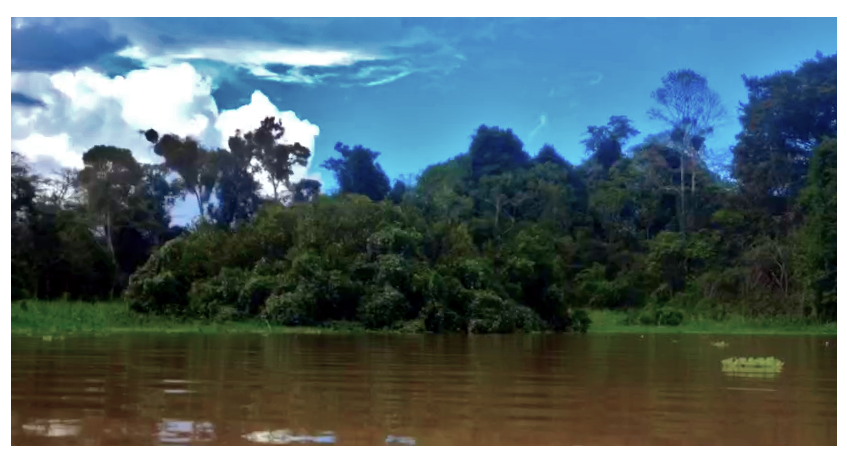
…Bio-Acoustic niche or what environment can tell us through sound…
The first noticeable aspect of Amazonian rainforest for the visitors is perhaps the strikingly high number of the living creatures compared to proportion of the area. You just have to point towards a direction and you will notice something moving! There are even some plant species that live on the surface of the fast and powerful Amazon river current. The Amazon rainforest alone hosts around 10 percent of the world’s known species and it only occupies around 1 percent of the total area of earth’s surface! Just imagine the fact that many of these animals are communicating through sound! This makes the rainforest a very rich and diverse acoustic environment in which finding a safe or less occupied sonic niche among a busy time/frequency spectrum is of crucial importance. Failure to find a safe communicational bandwidth may put the species in danger of extinction due to the fact that most of the sound-producing animals use this ability in order to transmit various important informational cues such as mating calls or territorial claims. As a result, in healthy and unaltered habitats, many birds, mammals and amphibians have learned to vocalize in a sonic niche not occupied by less mobile creatures such as near-ranging insects.
In his essay “The Niche Hypothesis”, Dr. Bernie Krause an American musician and soundscape ecologist argues that examining the voice of any natural habitat (Bio-Acoustic spectrum) as a whole sheds light on many important aspects that could be overlooked if we try to abstract the voice of a single creature from its habitat and try to understand it out of the context.
Taking a giant leap when considering the habitat as a whole, the sounds of each of these zones are so unique and important to creature life in a given location, if one creature
stops vocalizing, another immediately joins the chorus to keep that audio bio-spectrum intact. An audio bio-spectrum is a acoustical spectrographic mapping of any particular habitat by frequency (pitch, sometimes tone) and amplitude (loudness) over short periods of time. Territory is now defined in dimensions well beyond the 3-D topographical. In younger habitats birds and mammals will occupy only one niche at a time. However, in older environments, some tropical rainforest animal vocalizations, like the Asian paradise flycatcher (Terpsiphone paradisi), are so highly specialized that their voices occupy several niches of the audio biospectrum at the same time thus laying territorial claim to several audio channels. From our observations of the Asian paradise flycatcher, we suspect that we will soon be able to utilize this acoustical methodology to help determine the age of certain habitats.[1]Krause, Bernie. The Niche Hypothesis: A Virtual Symphony of Animal Sounds, the Origins of Musical Expression and the Health of Habitats. 6 June 1993, p. 5. researchgate.net.
Examining the Bio-Acoustic spectrum of any ecosystem requires a great amount of effort. Many biologists have dedicated their lives to this, through innovative research projects that try to monitor bio-regions and ecological habitats by employing various methods such as ‘biological acoustic monitoring’ to identify specific species behaviors and tracking what is known as “Defaunation”[2]https://en.wikipedia.org/wiki/Defaunation, the hard-to-detect decline of animals in a habitat that appears intact! There are many biological acoustic monitoring projects that have started collecting real-time bio-spectrum of many ecosystems to be stored and analyzed with the help of artificial intelligent algorithms. There are growing numbers of scientists who believe this data can be treated and used like rainfall and temperature data, collected from a worldwide network of permanent stations. [3]WELZ, ADAM. “Listening to Nature: The Emerging Field of Bioacoustics.” Yale E360, 5 Sept. 2019, e360.yale.edu/features/listening-to-nature-the-emerging-field-of-bioacoustics.
Monitoring bio-acoustic properties of any bio-region requires weeks, months or years of realtime audio collecting. Comparing to original biological acoustic monitoring projects my collection is a tiny sample which has no real scientific value but can give you an idea about the bio-acoustic properties of the amazon rainforest. Unfortunately my power supply was insufficient to support two hyper cardioid condenser microphones more than 8 hours simultaneously. Moreover, I had to find a moderately safe and quiet spot furthest from the community to setup my stereo rig in order to minimize the risk of unwanted noises. Although I was staying with a small local community far away from nearby Leticia city but the notorious sound of internal combustion engines used for powering all sort of boats was one of the most evident elements of the Amazon daytime soundscape. Engine sounds could be heard from miles away making it really hard to find a noise-free spot for field recording during daytime, plus the fact that in Amazon you can not simply get out and wander in the forest at anytime so I had to be extra careful with my decisions about the time and place of the recording.
The following audio samples are time compressed format of 7 hours continuous recording of Amazon rainforest soundscape in Peru. The recording session was conducted in a timespan (11PM to 6AM) with a minimum human activity. This listening experience will help you to get a sense of Amazon rainforest natural soundscape. You will notice the transition in bio-acoustic spectrum of this rainforest from midnight to early morning through which you will be able to track the harmonious gradual shift where creatures of a particular shared habitat naturally learned to find their dedicated sonic niche and time slot without interfering other creatures which clearly defines the biological health and age of any habitat.
The Bio-acoustic niche of the Amazon rainforest is primarily framed by its rich biodiversity. Insects, birds, amphibians and mammals were traditionally occupying most of the frequency bands on the bio-acoustic spectrum of this ancient habitat but fast pace human population growth initiated industrial farming hence massive deforestation and urbanization which unfortunately left an irreversible fingerprint on its acoustical characteristics.
✔ note: A moderately quiet place and quality open headphones are recommended for an optimum listening experience.
Date: 2018-May-20
Recorded file format: Wav 24bit/48k
Uploaded File Format: MP3 320 kbps/18.6Mb
Recorder: Sound devices MixPre 3
Mics: Line Audio CM3 Wide Cardioid
Recording format: Stereo ORTF
Location: -3.938839, -70.375562
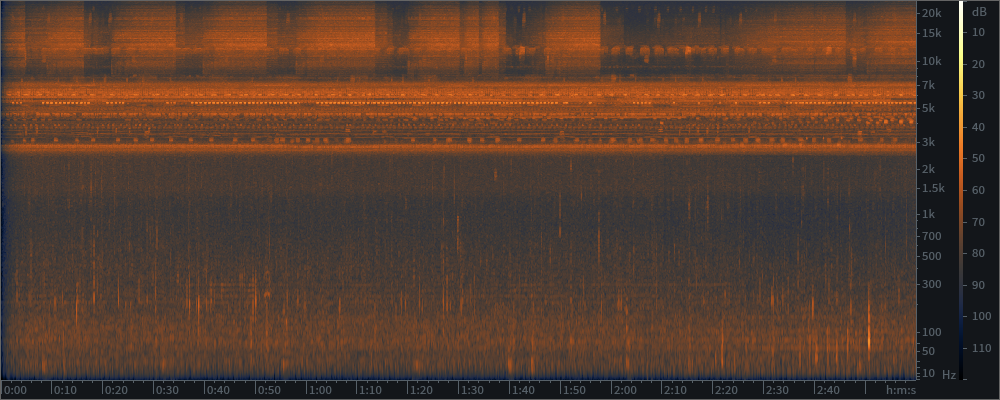
Date: 2018-May-20
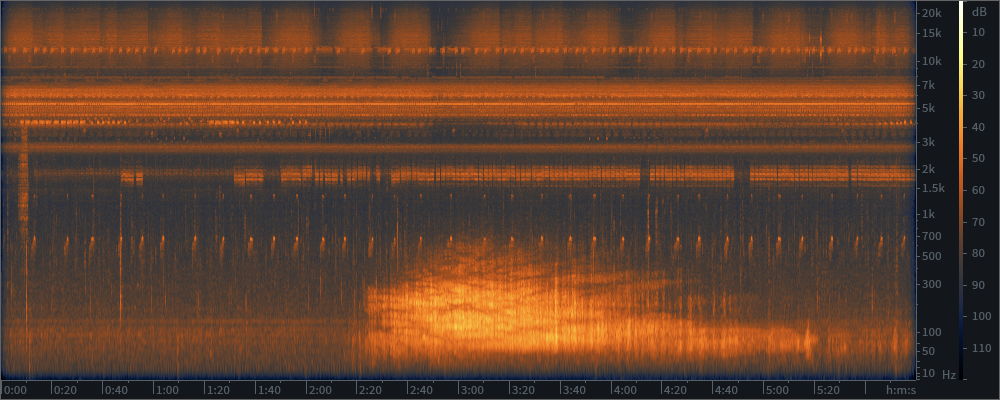
Date: 2018-May-20
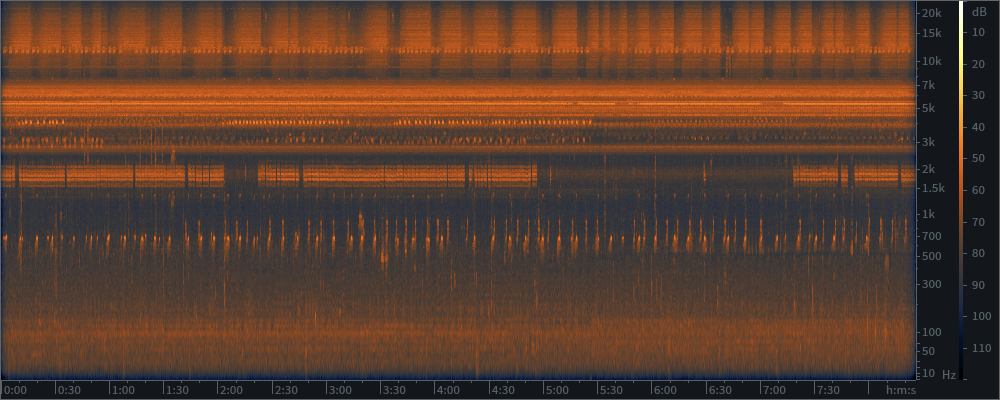
Date: 2018-May-20
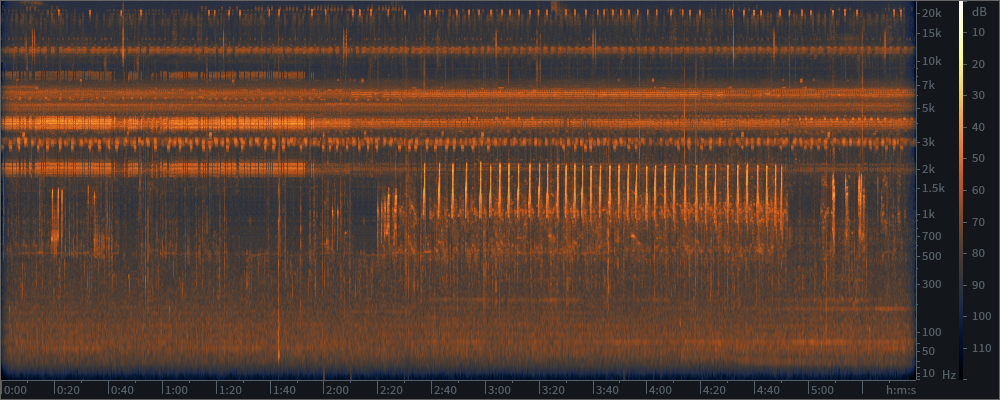
Date: 2018-May-20
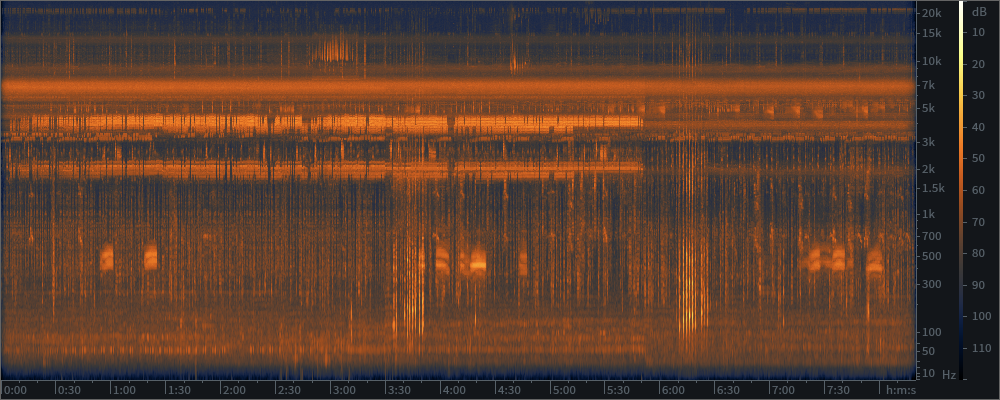
Date: 2018-May-20
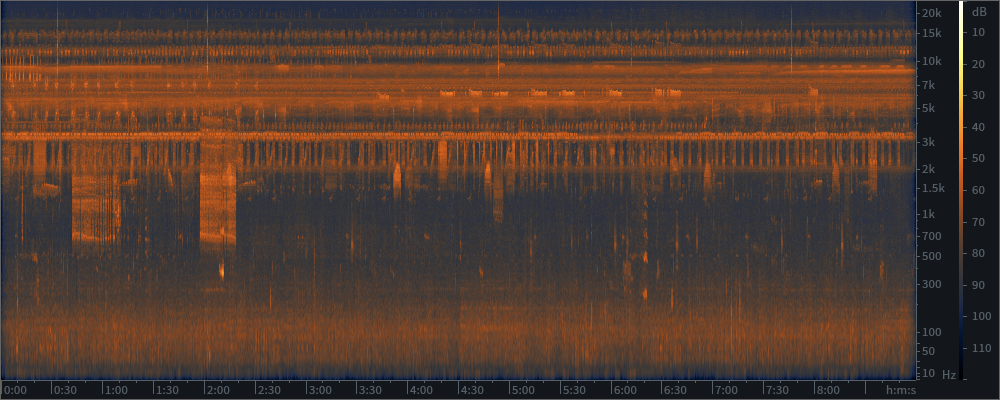
Date: 2018-May-20
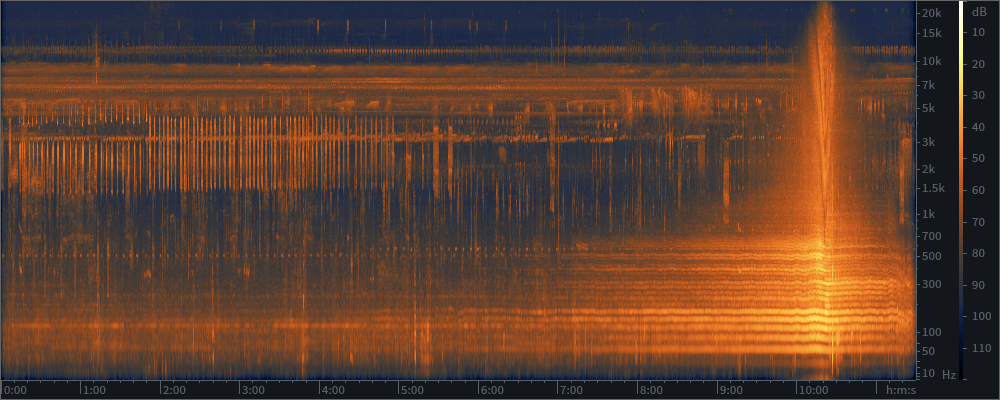
References
| ↑ 1 | Krause, Bernie. The Niche Hypothesis: A Virtual Symphony of Animal Sounds, the Origins of Musical Expression and the Health of Habitats. 6 June 1993, p. 5. researchgate.net. |
| ↑ 2 | https://en.wikipedia.org/wiki/Defaunation |
| ↑ 3 | WELZ, ADAM. “Listening to Nature: The Emerging Field of Bioacoustics.” Yale E360, 5 Sept. 2019, e360.yale.edu/features/listening-to-nature-the-emerging-field-of-bioacoustics. |